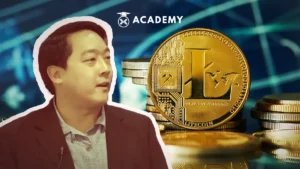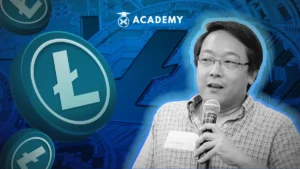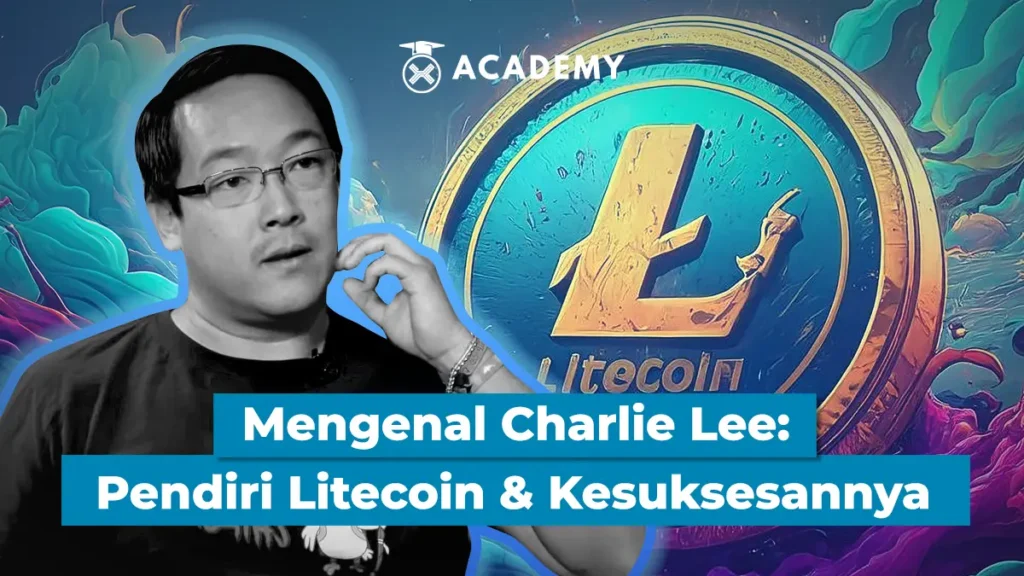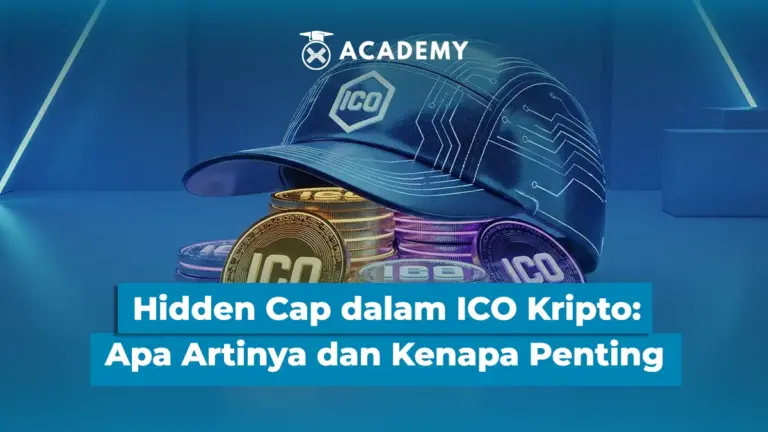Charlie Lee is the creator of Litecoin, one of the earliest Bitcoin derivatives. He is recognized as a successful entrepreneur in the emerging cryptocurrency industry.
Under his leadership, Litecoin remains one of the top cryptocurrencies in a highly volatile market-in contrast to many other altcoins (cryptocurrencies other than Bitcoin) that launched in the early 2010s and have now disappeared.
To learn more about Charlie Lee, from his education, early career in the tech industry, his first encounter with cryptocurrencies, to his role at Coinbase, check out the following review.

Who is Charlie Lee
Charlie Lee was born in 1977 to Chinese parents in the West African country of Ivory Coast, where his parents had lived since the 1960s. When he was 13 years old, his family moved to the United States.
After graduating from Lawrenceville School, a preparatory school in New Jersey, in 1995, Lee earned his B.S. (1999) and M.Eng. (2000) degrees in Computer Science from the Massachusetts Institute of Technology (MIT).
Lee’s father was also an MIT graduate, and his brother Bobby Lee, also a crypto-entrepreneur, later became the Founder and CEO of BTCC, a Bitcoin cryptocurrency exchange in China.
Read More: Sunny Lu: The Inspiration Behind VeChainThor’s Success
Charlie Lee’s Education
A well-known figure in the cryptocurrency world, Charlie Lee has a strong educational background that has been the foundation for his success.
1. Education at MIT
Lee completed his higher studies at the Massachusetts Institute of Technology (MIT), which is one of the most reputable educational institutions in the world. There, he earned his Bachelor of Science (B.S.) and Master of Engineering (M.Eng.) degrees in Computer Science.
2. Inherited the spirit of innovation from his family, who also have a background in technology.
His education at MIT not only gave him in-depth technical knowledge, but also reinforced the spirit of innovation that has been a part of his family. His father was also an MIT graduate, indicating a family tradition in technology.
These influences, coupled with his MIT education, helped shape Lee’s vision and skills in developing Litecoin and his contributions to the cryptocurrency industry.
Early Career in the Tech Industry
Before joining Google in 2007, Lee spent seven years as a software engineer at leading technology companies in California: KANA Communications (2000-2003) and Guidewire Software (2003-2007).
Lee’s 6-year tenure (2007-2013) at Google as a Software Engineer was characterized by his contributions to iconic products such as YouTube Mobile, Chrome OS, and Play Games.
During that period, the world’s first cryptocurrency, Bitcoin (BTC), was invented by an anonymous programmer (or group) under the pseudonym Satoshi Nakamoto.
Read More: Meet Pavel Durov, the man behind the success of Telegram and TON
First Encounter with Crypto Assets
Lee revealed that he was first introduced to cryptocurrencies in 2011 when he read an article about Silk Road, an online marketplace that only accepted Bitcoin as payment.
His personal economic philosophy already made him skeptical of the Federal Reserve System, and in the years before Litecoin, he was exploring various investment strategies that were less dependent on central banks, including gold trading.
Given his expertise in computer technology and his deep interest in alternative investments, the article became a focal point that directed all his attention to cryptocurrencies and endorsed blockchain technology as the ideal path to achieve his goals.
First Failure and Second Success
Like many other developers enthusiastic about emulating Bitcoin, Lee failed at his first cryptocurrency attempt. Unlike most other developers, he succeeded on his second attempt.
Fairbix, a blockchain payment system Lee developed by copying source code from Tenebix (another early cryptocurrency), failed just a few weeks after its launch, primarily due to a bug related to fraudulent transactions that Lee decided not to fix as he was focused on developing Litecoin.
Role at Coinbase
In 2013, two years after the launch of Litecoin, Lee left Google to accept a position that gave him more time to work on his digital assets as an Engineering Manager at Coinbase, a newly created digital asset exchange.
Within two years, he was promoted to Director of Engineering.
Contributions to the Litecoin Foundation
In 2017, Lee was ready to work full-time on Litecoin. He left Coinbase to focus fully on his role as CEO of the Litecoin Foundation, a non-profit organization established to “advance Litecoin for the good of society, by developing and promoting cutting-edge blockchain technology.”
Key differences between Litecoin and Bitcoin
Charlie Lee has always described Litecoin as a complement to-not a competitor with-Bitcoin: as “the silver to Bitcoin’s gold”.
Since its launch in 2011, he has positioned Litecoin as an asset ideal for light transactions, such as online shopping, and Bitcoin as a cryptocurrency for heavy transactions, such as international payments.
To achieve those goals, Lee built LTC with some similarities to Bitcoin as well as some modifications designed to help it evolve more effectively.
Both Litecoin and Bitcoin are decentralized, peer-to-peer (P2P) cryptocurrencies that enable payments with minimal fees around the world without a third party.
Litecoin is a fork of Bitcoin: a currency that takes the Bitcoin source code with some minor changes that diverge into separate paths with different coins.
However, Lee also embedded some important differences in Litecoin that not only differentiate the currency from Bitcoin in the cryptocurrency market but also fix some of the weaknesses he identified in Bitcoin, namely accessibility, speed, volume, and fees.
Read More: Getting to Know the People: Blackrock Founder Larry Fink & the Evolution of Bitcoin
1. Different Mining Algorithm
By choosing a different mining algorithm (Scrypt vs. SHA-256), Charlie Lee sought to make mining accessible to anyone with a basic computer central processing unit (CPU) – unlike Bitcoin, which requires more processing power from a graphics processing unit (GPU).
Initially, Lee’s choice of Scrypt allowed Litecoin to be mined with CPUs, but that advantage proved only temporary.
As mining software and application-specific integrated circuits (ASICs) for the Scrypt algorithm were developed, Litecoin miners also switched to GPUs, and Litecoin mining without more powerful mining rigs was no longer competitive.
2. Faster Blocks, Higher Maximum Supply, Lower Fees
The oft-cited advantages of Litecoin over Bitcoin were designed by Lee specifically to make LTC more “spendable” than BTC: faster block generation, higher maximum circulating supply, and lower transaction fees.
Lee designed Litecoin to produce blocks four times faster (average interval of 2.5 minutes compared to 10 minutes for Bitcoin), and also built Litecoin with four times more maximum circulating supply (Litecoin maximum 84 million LTC; Bitcoin maximum 21 million BTC) as well as much lower average transaction fees compared to Bitcoin.

Future Outlook on Cryptocurrencies
At a conference in 2019, Lee stated that his ultimate goal is to “create sound money”. Since first hearing about Bitcoin, he has believed that cryptocurrencies are “a better form of money than anything human civilization has ever seen”.
When asked if he predicts central banks will eventually issue cryptocurrencies, he sees no advantage in that scenario.
One of the main benefits of digital money is decentralization so government control would make crypto assets “effectively no different from a digital version of the US dollar”.
He believes that eventually only a few cryptocurrencies (likely Bitcoin, Litecoin, and a few others) will survive in the market.
At that point, the remaining currencies could “actually represent real value” and even become interchangeable: one could send Litecoin, and the recipient could receive Bitcoin, which would be converted automatically.
He predicted that as merchant adoption increases and the user experience improves, consumers will have more confidence in cryptocurrencies, mass adoption will follow, and cryptocurrencies will be used like traditional money everywhere.
He also said that, “Things will get simpler, and that’s when things will boom.”
Conclusion
In conclusion, Charlie Lee is the creator of Litecoin, one of the early derivatives of Bitcoin that is often referred to as “the silver to Bitcoin’s gold”.
A graduate of the Massachusetts Institute of Technology (MIT) with a B.S. and M.Eng. in Computer Science, Lee inherited a spirit of innovation from his family with a background in technology.
Before fully focusing on Litecoin, Lee had significant professional experience. He worked as a software engineer at leading companies such as KANA Communications and Guidewire Software.
Lee then joined Google, where he contributed to iconic products such as YouTube Mobile and Chrome OS, before joining Coinbase as an Engineering Manager.
In 2017, Lee left Coinbase to focus on being the CEO of the Litecoin Foundation, a non-profit organization that advances Litecoin and blockchain technology.
He designed Litecoin with many differences from Bitcoin, including a different mining algorithm (Scrypt), faster blocks, higher maximum supply, and lower transaction fees.
Lee believes that cryptocurrencies are a better form of money and predicts that only a few cryptocurrencies, such as Bitcoin and Litecoin, will survive in the market.
He also stresses the importance of decentralization and sees government control as a threat that could turn cryptocurrencies into nothing different from digital versions of fiat money.
Furthermore, Lee expects cryptocurrencies to be as widely used as traditional money, as consumer adoption and trust increases.
Let’s Invest Litecoin on INDODAX
For those of you who want to buy Litecoin at INDODAX, you previously need to check the latest Litecoin price (LTC to IDR) today on INDODAX Market. Here are the steps to buy Litecoin on INDODAX:
- Visit INDODAX website and create an account if you don’t have one yet.
- then, complete the identity verification process in accordance with INDODAX’s policies to ensure the security of your account
- Once your account is active, deposit funds into your INDODAX account using bank transfer or other payment methods available on the platform.
- Next, log in to your INDODAX account using the registered information
- Then open the market page on the platform and search for Litecoin (LTC) in the list of available crypto assets
- Select the appropriate Litecoin trading pair, such as LTC/IDR, if you are using local currency
- Specify the type of order you want to place, be it a market order (purchase at the current price) or a limit order (purchase at a price you specify)
- Enter the amount of Litecoin you wish to purchase
- Double-check the details of your order, including the desired amount and price
- Confirm your order and complete the purchase
- After the transaction is complete, check your Litecoin balance in your INDODAX account.
- Make sure to enable additional security features, such as two-factor authentication (2FA), to protect your account
- Done!
FAQ
1. Who is Charlie Lee?
Charlie Lee is the creator of Litecoin, one of the most famous derivatives of Bitcoin, and is an influential figure in the cryptocurrency industry.
2. What is Charlie Lee’s educational background?
Charlie Lee holds a BS and M.Eng. in Computer Science from the Massachusetts Institute of Technology (MIT), following in his father’s footsteps.
3. Why did Charlie Lee create Litecoin?
Charlie Lee created Litecoin as a complement to Bitcoin, focusing on faster transactions, lower fees, and higher maximum supply.
4. What are the main differences between Litecoin and Bitcoin?
Litecoin has faster block generation times, lower transaction fees, and uses a different mining algorithm than Bitcoin.
5. What is Charlie Lee’s role in the Litecoin Foundation?
Charlie Lee is the Managing Director of the Litecoin Foundation, where he focuses on the development and promotion of Litecoin and blockchain technology.
Read More: World Crypto Figures





 Polkadot 9.23%
Polkadot 9.23%
 BNB 0.57%
BNB 0.57%
 Solana 4.89%
Solana 4.89%
 Ethereum 2.37%
Ethereum 2.37%
 Cardano 1.22%
Cardano 1.22%
 Polygon Ecosystem Token 2.17%
Polygon Ecosystem Token 2.17%
 Tron 2.83%
Tron 2.83%
 Market
Market


